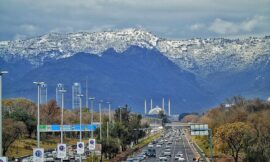The journey from Tianjin to Beijing encompasses a transition from one of China’s bustling port cities to its dynamic capital, revealing the rich tapestry of history, culture, and modernity that characterizes the region. As travelers traverse this route, they embark on a narrative that unfolds from the maritime landscapes of Tianjin to the political and cultural heart of China in Beijing.
Tianjin, with its strategic location along the Bohai Bay, stands as a testament to China’s economic prowess and global connectivity. Leaving this coastal city, the journey to Beijing often involves a seamless transition facilitated by the high-speed rail network or well-maintained highways. The distance of approximately 120 kilometers between Tianjin and Beijing is bridged by a network of modern transportation, symbolizing China’s commitment to efficient connectivity.
Arriving in Beijing, travelers encounter a city that encapsulates China’s imperial past, revolutionary history, and contemporary ambitions. The juxtaposition of ancient landmarks, such as the Forbidden City and the Temple of Heaven, with modern marvels like the Beijing Central Business District and the Bird’s Nest stadium, creates a unique panorama that reflects the nation’s enduring legacy and forward-looking vision.
The Forbidden City, a UNESCO World Heritage site, serves as the symbolic heart of Beijing and a testament to China’s imperial history. The sprawling palace complex, with its meticulously designed courtyards, halls, and gates, was the seat of power for Chinese emperors from the Ming to the Qing Dynasty. Exploring the Forbidden City offers a journey through China’s imperial past, where the halls resonate with the echoes of dynastic rule.
Adjacent to the Forbidden City is Tiananmen Square, one of the world’s largest public squares and a site of historical significance. It is here that momentous events, such as the proclamation of the People’s Republic of China in 1949 and the 1989 pro-democracy protests, unfolded. The square is flanked by iconic structures like the Monument to the People’s Heroes and the Mausoleum of Mao Zedong, adding layers to Beijing’s historical narrative.
The Temple of Heaven, another UNESCO World Heritage site, stands as a testament to China’s spiritual heritage. The temple complex, set within a vast park, was a site where emperors conducted rituals to ensure a bountiful harvest. The intricate architecture and serene surroundings offer a glimpse into the deep-rooted connection between Chinese culture and the natural world.
Beijing’s modern landscape is defined by the Beijing Central Business District (CBD), where sleek skyscrapers and futuristic designs showcase the city’s economic vibrancy. The CCTV Headquarters, often referred to as the “Big Pants” due to its unique architectural form, and the China World Trade Center Tower III contribute to Beijing’s skyline, reflecting its status as a global financial hub.
The Bird’s Nest stadium, an architectural masterpiece built for the 2008 Summer Olympics, is a symbol of Beijing’s ability to seamlessly blend modernity with tradition. The stadium’s lattice-like structure and innovative design have become synonymous with China’s emergence on the global stage.
Exploring Beijing’s ancient hutongs, narrow alleyways that weave through traditional courtyard residences, provides an intimate view of everyday life amid the city’s historical charm. These residential areas offer a stark contrast to the modernity of the CBD, creating a harmonious balance between tradition and progress.
Beijing’s culinary scene, with its diverse array of regional Chinese cuisines, street food markets, and fine-dining establishments, allows visitors to savor the flavors of China’s vast culinary heritage. From Peking duck to regional specialties, the city’s gastronomic landscape mirrors its cultural diversity.
In conclusion, the journey from Tianjin to Beijing is a voyage through time and space, encompassing the maritime landscapes of a bustling port city and culminating in the political and cultural heart of China. The transition is not just a physical movement between two cities but a passage through the layers of history, from imperial grandeur to revolutionary fervor, and a glimpse into China’s aspirations for the future. Beijing, with its juxtaposition of ancient wonders and modern achievements, welcomes travelers to delve into the complexities of a nation that cherishes its past while forging ahead on the path of progress.



